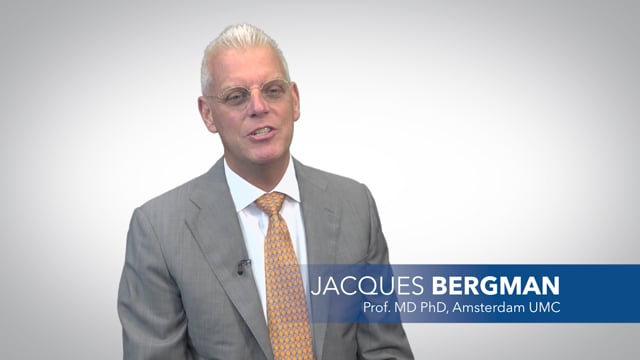Clinical Summary
Gastroenterology
may 2022
An objective, fully automated Barrett’s risk prediction assay outperforms pathology in risk stratifying Barrett’s esophagus with low-grade dysplasia
REFERENCE
Khoshiwal AM, Frei NF, Pouw RE et al. A tissue systems pathology test outperforms pathology review in risk stratifying patients with low-grade dysplasia. J. Gastroenterol. 2023; 165(5):p 1168-1179.E6. https://doi.org/10.1053/j.gastro.2023.07.029
Research Highlights with Jacques Bergman
Interview Topics
- How common is Barrett’s esophagus and why is it so important to physicians?
- What tools do physicians use to stratify the risk of Barrett’s esophagus progressing to cancer?
- How do you determine who should be treated prophylactically?
- What is the definition of an expert pathologist?
- What is the risk of skipping the secondary confirmation of low grade dysplasia by an expert pathologist?
- Why did you decide to compare the performances of TissueCypher and expert pathology?
- What were the key findings of your study?
- What is the role for TissueCypher in confirming low grade dysplasia?
- Can this thinking be extended to pathology that returns indefinite for dysplasia?
- How does TissueCypher perform in biopsies determined to be non-dysplastic by pathology?


Would you like to talk more about data related to TissueCypher?
References
1. Khoshiwal et al. Presented at DDW 2022.
2. Singh et al. Gastrointest Endosc. 2014 Jun;79(6):897-909.e4; quiz 983.e1, 983.e3
3. Curvers et al. Am J Gastroenterol. 2010 Jul;105(7):1523;
4. Duits et al. Gut. 2015 May;64(5):700-6.;
5. Iyer et al. Clin Gastroenterol Hepatol. 2022
6. McHugh. Biochem Med. (Zagreb) 2012


